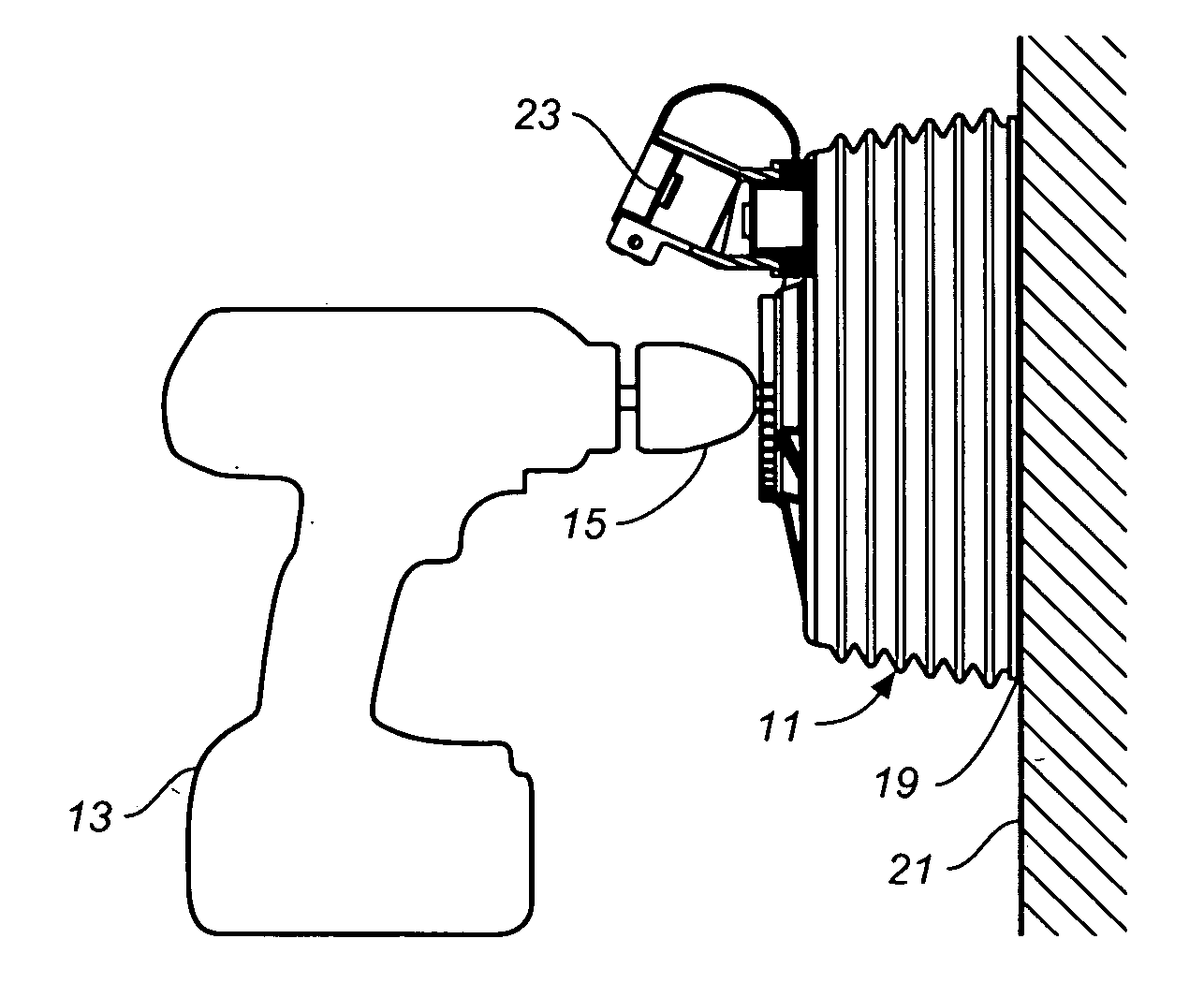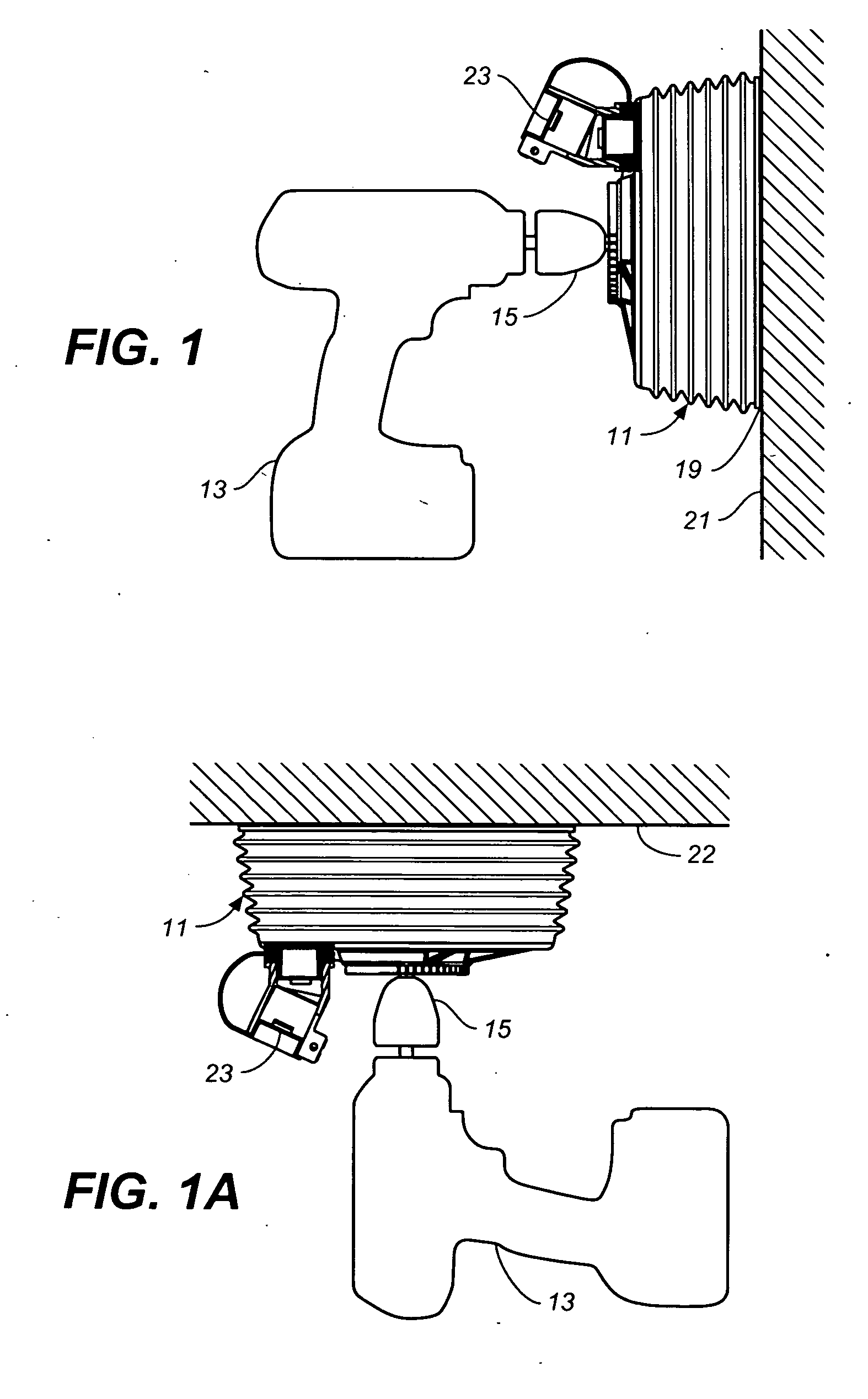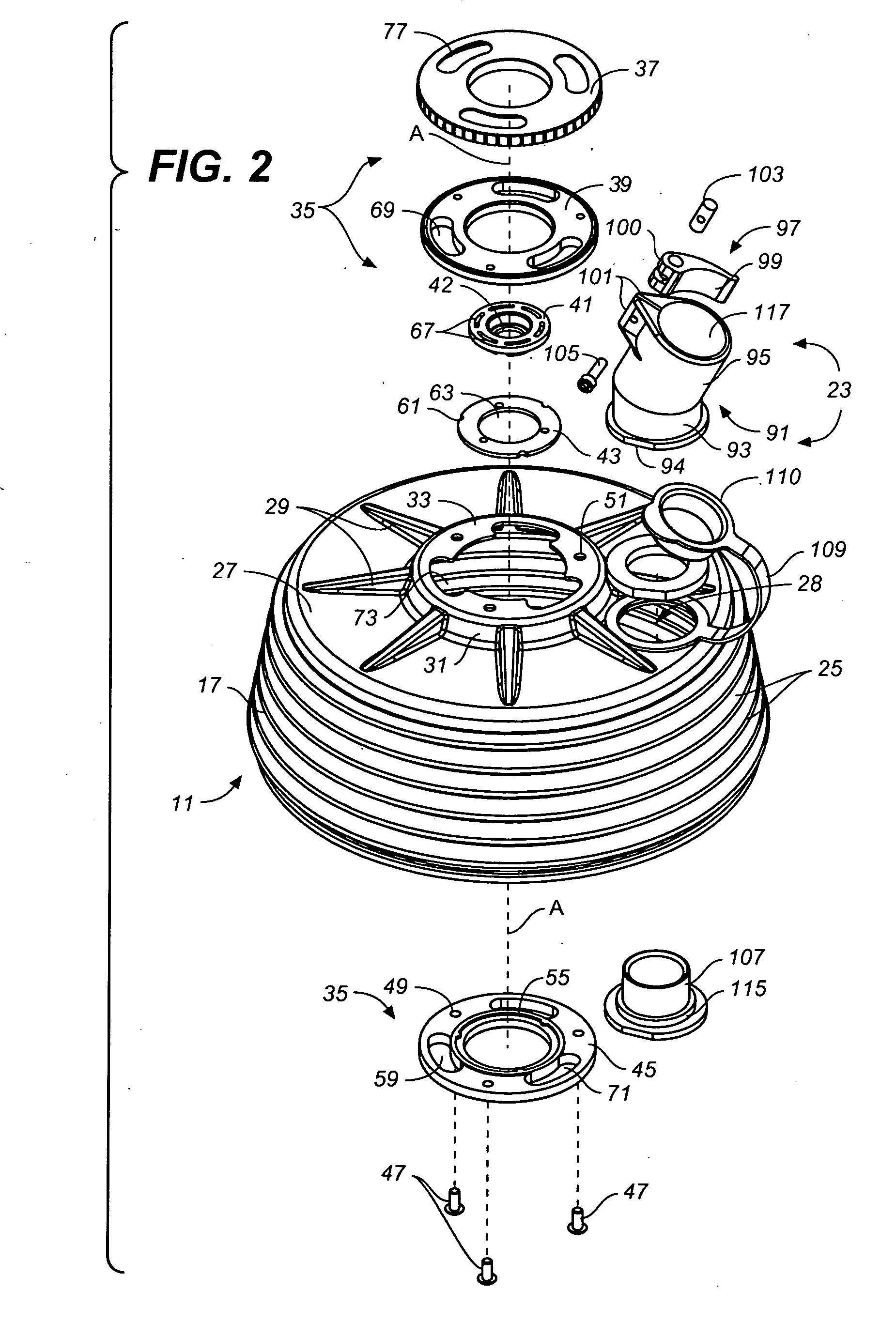Debris shield for a rotary tool or machine
a technology of rotary tools and shields, which is applied in the field of rotary tools or machines, can solve the problems of preventing the efficient evacuation of the boot on a continuous basis, providing no air intake facilities, and not providing for the accommodation of different types and sizes of tools
- Summary
- Abstract
- Description
- Claims
- Application Information
AI Technical Summary
Benefits of technology
Problems solved by technology
Method used
Image
Examples
Embodiment Construction
[0060] Referring now to the drawings, FIGS. 1 and 1A generally show how a debris shield in accordance with the invention, such as debris shield 11, is used with a hand drill 13 when cutting or drilling holes in a vertical or horizontal surface to shield the worker and surrounding work area from debris generated during the cutting operation. The other later-described embodiments of the invention would be used with a hand drill in a similar manner. The debris shield holds and covers a cutting or drilling implement (not shown and sometimes generically referred to herein as rotary surface working implements) having an arbor end that projects from the top of the drill shield and that is inserted into and held by the chuck 15 of hand drill 13. The illustrated debris shield includes a debris collection housing in the form of bellows housing 17, which has an open end and surface contact rim 19. When cutting or drilling a hole, the housing's surface contact rim is placed against a work surfa...
PUM
| Property | Measurement | Unit |
|---|---|---|
| rotation | aaaaa | aaaaa |
| angles | aaaaa | aaaaa |
| vacuum | aaaaa | aaaaa |
Abstract
Description
Claims
Application Information
 Login to View More
Login to View More - R&D
- Intellectual Property
- Life Sciences
- Materials
- Tech Scout
- Unparalleled Data Quality
- Higher Quality Content
- 60% Fewer Hallucinations
Browse by: Latest US Patents, China's latest patents, Technical Efficacy Thesaurus, Application Domain, Technology Topic, Popular Technical Reports.
© 2025 PatSnap. All rights reserved.Legal|Privacy policy|Modern Slavery Act Transparency Statement|Sitemap|About US| Contact US: help@patsnap.com



